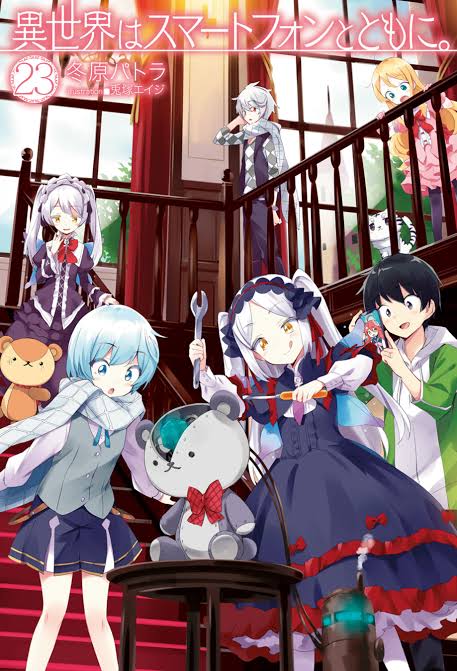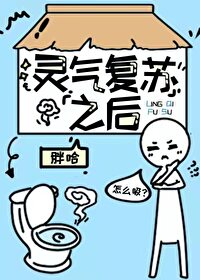Shu Bao, who left the cultural museum, had no idea that he had perfectly missed his target. At this time, the mouse, full of determination, had already begun searching for information about Wei Lai.
It was impossible to ask people directly, so Shu Bao could only hope that the first robot created by Lai Mi might have left some record in the history of the Mechanoids.
However, there was an important issue: the Mechanoids shared consciousness and did not experience memory loss. They didn’t need to record much data because each of their brains was itself a database.
Fortunately, it seemed that the Mechanoids had a particular interest in collecting things, an interest that might have been passed down from Lai Mi. Shu Bao could only set off to search for more cultural museums or large-scale collections by the Mechanoids, hoping to find some clues about Wei Lai there.
By now, it was already late at night, and the Mechanoids in the main city were few. Shu Bao left the familiar area and headed toward an unfamiliar region to continue exploring. Since he had already roughly figured out the living habits of the Mechanoids and had a better understanding of the city’s architecture, Shu Bao’s exploration went smoothly.
The residential areas of the Mechanoids were places Shu Bao mainly avoided. He was looking for buildings like libraries, cultural museums, and museums.
In this steel city, different types of buildings didn’t have special markings, and there were no management organizations in the main city. All the policies and orders of the Mechanoids were directly issued by the central brain to individuals. This was also the source of the Mechanoids’ terrifying efficiency and execution ability. It would be incredibly difficult to find a person in such a city.
The nimble furball moved from building to building, occasionally encountering noisy dance halls. In those flashing lights, Shu Bao deeply understood what was meant by a “pandemonium”.
Various Mechanoids twisted and contorted their bodies into different shapes, and some even tossed their limbs around, accompanied by strange and unrestricted noises. In Shu Bao’s eyes, this wasn’t a dance party at all—it was a large-scale haunted house.
The startled mouse quickly slipped away, confused by the Mechanoids’ nightlife. Did the Mechanoids’ singing battles involve comparing sound cards, or who could make the strangest noises? Could it be that they got drunk, only to wake up the next day and realize they had picked up the wrong limbs?
Shaking his head to rid himself of these strange thoughts, the mouse continued to wander the main city. The Mechanoids’ main city was bustling, with metal buildings standing next to each other. Even so, it was hard to find two identical buildings.
Fortunately, the mouse could always count on his luck. Just before dawn, Shu Bao finally found his target—a large collection hall filled with paintings.
The main city was about to enter daytime, and Shu Bao, unable to investigate more thoroughly, slipped inside quietly, following the Mechanoids heading to work.
The collection hall was enormous, with ten floors, much wider than the previous collection hall for the Mechanoids’ shells. Upon entering, one could see that the interior structure was a simple square with walls covered in paintings. Aside from the paintings adorning the walls, everything else in sight was white, with no other patterns or decorations on the walls or floor.
This kind of open, unadorned space was not very friendly to the mouse. After all, the mouse couldn’t sleep hanging on the paintings. But before he could worry about his sleep issues, his attention shifted to the paintings.
As a versatile mouse, Shu Bao considered his aesthetic sense to be quite good, but he was at a loss when facing these paintings. The frames varied in size, and the content was bizarre—mostly chaotic layers of colors that didn’t form any recognizable shapes or outlines.
The mouse tilted his head, staring at the first painting for a long time, but couldn’t make sense of it. In the end, he gave up and moved on to the second painting, but the second, third, fourth…
As he continued looking, all the paintings seemed similar—either they were disordered color stacks or chaotic lines. Shu Bao didn’t know what the artist was trying to express but forced himself to continue looking.
Fortunately, as he moved forward, Shu Bao finally saw something familiar, like a red apple, a triangle, and a piece of blue sky.
Shu Bao vaguely understood that the earlier paintings were probably not difficult to understand because of his own limitations, but because the artist himself had initially not known what he was painting. It was like a confused child, randomly doodling on a piece of paper with a brush, and only later began to gain some awareness.
Realizing this, Shu Bao quickened his pace in examining the paintings. If these paintings were not meant to be appreciated, then they must have been created to record something. Regardless of the purpose, he decided to quickly skim through all the paintings in the collection hall.
As his speed increased, the paintings before him flashed by like slides, and the content of the paintings became clearer and more specific, gradually becoming more realistic. The subjects in the paintings were many—landscapes, objects, buildings…
Soon, Shu Bao finished looking at all the paintings on the first floor. Hearing the increasing noise from below, he realized that visitors had arrived at the collection hall.
However, after quietly observing for a while, the mouse regretfully discovered that the visitors either enjoyed the paintings alone, gathered in silence, or communicated through their consciousness, never needing to speak aloud.
With no eavesdropping opportunities left, the mouse moved on to the second floor, continuing at the same speed to browse, then to the third floor, and the fourth floor…
Unlike those who slowly savored the finer paintings, the mouse quickly made his way to the final floor. His immediate impression was that the artist’s skill had steadily improved. All the paintings in the building clearly came from the same artist, making the entire collection hall both a record of the artist’s work and his progress.
The artist’s style leaned towards warm, fresh themes, occasionally depicting grand, majestic landscapes, but mostly consisting of everyday scenes in warm colors. When Shu Bao reached the fifth floor, he saw a familiar silhouette in one of the paintings and finally realized that the artist was Lai Mi.
Starting from the fifth floor, images of Wei Lai frequently appeared in the paintings. Just like the photos Lai Mi had shown him, Wei Lai was a robot with a perfect human appearance, though his body was entirely made of shining silver-white material instead of human skin.
Because of this, whenever Wei Lai appeared in a painting, he was always the most striking figure. Strangely, however, Lai Mi himself never appeared in any of the paintings. Perhaps Lai Mi didn’t like depicting himself, or maybe he felt his own outline was not perfect.
Shu Bao was thus immersed in Lai Mi’s warm paintings until he reached the last floor. The tenth floor’s decor was no different from the other nine; the walls and floors were still pure white, with various-sized frames hanging quietly.
But when the mouse looked at the paintings, he was immediately stunned. The overall colors on the walls had drastically changed—scarlet, dark, gloomy…
The heavy colors were mixed. The few paintings with slightly brighter colors had an intense, explosive impact, as if some repressed emotion had finally exploded, igniting the entire universe.
The once-structured world was destroyed again and the paintings turned into obscure abstract art. Twisted patterns mixed with chaotic disorder, yet each painting was different in its content.
Shu Bao wasn’t a professional, so he couldn’t tell whether these paintings were a result of some transformation Lai Mi had undergone, or if they were created by someone with a completely different personality. Regardless of which, they felt deeply unsettling.
The mouse urgently wanted to understand what had happened, so he carefully examined each painting. As he scrutinized them, the paintings seemed almost magical—staring at them for too long, he began to feel overwhelming negative emotions.
Enduring the intense discomfort, Shu Bao slowly began to discern a clue in the paintings. Among the twisted lines, he could vaguely see a distorted silver-white humanoid figure. The bright silver-white was still striking, but now it appeared to be twisted and mixed into a chaotic, distorted mass.
Upon closer inspection, the chaotic black and blood-red colors turned out to be made up of countless twisted humanoid figures, as if, alongside the silver-white humanoid, many black humanoids had appeared.
Realizing this pattern, Shu Bao continued his observation and discovered that the silver-white humanoids no longer appeared. In the subsequent paintings, whenever humanoid figures appeared, they were always dark, twisted, and elongated in strange forms.
Approaching the final painting, the entire piece was covered with bright red. It was a strange color, like blood, like burning flames, or like a dying sun struggling to stay alive…
Shu Bao couldn’t accurately describe the feeling, but he sensed that the artist, whoever they were, had abilities far beyond normal humans. The paintings contained a powerful spiritual energy, each one infused with the artist’s emotions. Those emotions, because of their intensity, solidified into energy, gathered within the paintings, and affected the viewers.
Anyone with weak mental fortitude who looked at them would likely be overwhelmed by the emotional impact and go mad. Fortunately, Shu Bao, being a skilled veteran, felt discomfort but his mental state wasn’t harmed.
Pulling his gaze away from the painting, the intense emotional infection vanished. If these paintings were indeed created by Lai Mi, then the twisted silver-white humanoids likely represented Wei Lai. As for the black humanoids, they were probably some kind of hostile humanoid creatures. They surrounded Wei Lai, looking like loyal followers. Since no more dazzling silver-white appeared in the later paintings, it seemed to indicate that Wei Lai had disappeared from Lai Mi’s world.
If that were true, then Lai Mi had lied. Perhaps it was self-deception, or perhaps it was a result of memory distortion. He had lost the last memory of Wei Lai and stubbornly believed that they were still living happily together.
Moreover, if the silver-white figure in the paintings truly represented Wei Lai, then Wei Lai’s identity must be significant. And what about those twisted black humanoids in the paintings? Could they represent the mechanoids that came into existence later?





https://t.me/s/iGaming_live/4868